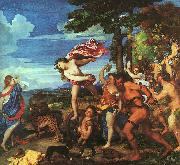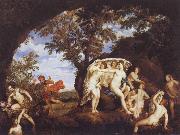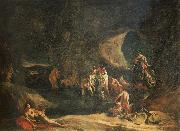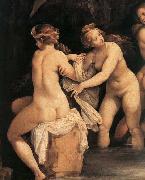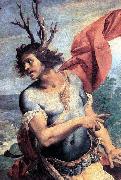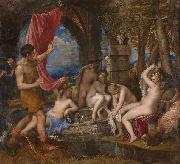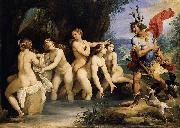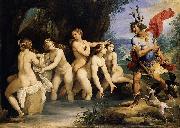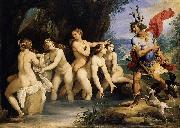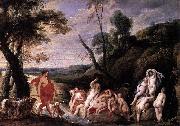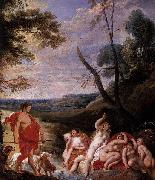Wholesale Oil Painting No Minimum |
|||||||||||
|
|
|||||||||||

|
|||||||||||
|
|
|
||||||||
|
|
||||||||
Diana and Actaeon
Diana and Actaeon Painting ID:: 1675 |
1556-59
National Gallery of Scotland, Edinburgh 1556-59 National Gallery of Scotland, Edinburgh |
|||||||
|
|
||||||||
Albani FrancescoItalian Baroque Era Painter, 1578-1660 Italian painter and draughtsman. He was a distinguished artist of the Bolognese school, deeply influenced by Annibale Carracci's classicism, who worked in Rome as well as Bologna, painting altarpieces, frescoes and and cabinet pictures. His fame rests on his idyllic landscapes and small mythological pictures, |
||||||||
|
|
||||||||
|
|
Diana and Actaeon
Diana and Actaeon Painting ID:: 32576 |
mk79
1625-30
oil on wood
mk79 1625-30 oil on wood |
||||||
|
|
||||||||
Giovanni Battista TiepoloItalian Rococo Era Painter, 1696-1770 Giovanni Battista Tiepolo was born in Venice on March 5, 1696. His father, who was part owner of a ship, died when Tiepolo was scarcely a year old, but the family was left in comfortable circumstances. As a youth, he was apprenticed to Gregorio Lazzarini, a mediocre but fashionable painter known for his elaborately theatrical, rather grandiose compositions. Tiepolo soon evolved a more spirited style of his own. By the time he was 20, he had exhibited his work independently, and won plaudits, at an exhibition held at the church of S. Rocco. The next year he became a member of the Fraglia, or painters guild. In 1719 he married Cecilia Guardi, whose brother Francesco was to become famous as a painter of the Venetian scene. They had nine children, among them Giovanni Domenico and Lorenzo Baldassare, who were also painters. In the 1720s Tiepolo carried out many large-scale commissions on the northern Italian mainland. Of these the most important is the cycle of Old Testament scenes done for the patriarch of Aquileia, Daniele Dolfin, in the new Archbishop Palace at Udine. Here Tiepolo abandoned the dark hues that had characterized his early style and turned instead to the bright, sparkling colors that were to make him famous. |
||||||||
|
|
||||||||
|
|
Diana and Actaeon
Diana and Actaeon Painting ID:: 41174 |
mk157
1720-22
Oil on canvas
10x135cm
mk157 1720-22 Oil on canvas 10x135cm |
||||||
|
|
||||||||
GIuseppe Cesari Called Cavaliere arpinoRome 1568-1640 |
||||||||
|
|
||||||||
|
|
Diana and Actaeon
Diana and Actaeon Painting ID:: 62379 |
1603-06 Oil on copper Museum of Fine Arts, Budapest Author: CESARI, Giuseppe Title: Diana and Actaeon (detail) , 1601-1650 , Italian Form: painting , mythological 1603-06 Oil on copper Museum of Fine Arts, Budapest Author: CESARI, Giuseppe Title: Diana and Actaeon (detail) , 1601-1650 , Italian Form: painting , mythological |
||||||
|
|
||||||||
GIuseppe Cesari Called Cavaliere arpinoRome 1568-1640 |
||||||||
|
|
||||||||
|
|
Diana and Actaeon
Diana and Actaeon Painting ID:: 62380 |
1603-06 Oil on copper Museum of Fine Arts, Budapest Author: CESARI, Giuseppe Title: Diana and Actaeon (detail) , 1601-1650 , Italian Form: painting , mythological 1603-06 Oil on copper Museum of Fine Arts, Budapest Author: CESARI, Giuseppe Title: Diana and Actaeon (detail) , 1601-1650 , Italian Form: painting , mythological |
||||||
|
|
||||||||
TitianItalian High Renaissance Painter, ca.1485-1576 Italian painter active in Venice. As a young man he was taught by the Bellini family and worked closely with Giorgione. His early works are so similar in style to Giorgione's as to be indistinguishable, but soon after Giorgione's early death Titian established himself as the leading painter of the Republic of Venice. Among his most important religious paintings is the revolutionary and monumental Assumption (1516 ?C 18) for Santa Maria dei Frari, in which the Virgin ascends to heaven in a blaze of colour accompanied by a semicircle of angels. Titian was also interested in mythological themes, and his many depictions of Venus display his work's sheer beauty and inherent eroticism. Bacchus and Ariadne (1520 ?C 23), with its pagan abandon, is one of the greatest works of Renaissance art. Titian was sought after for his psychologically penetrating portraits, which include portrayals of leading Italian aristocrats, religious figures, and Emperor Charles V. He reached the height of his powers in The Rape of Europa (c. 1559 ?C 62), one of several paintings done for Philip II of Spain. He was recognized as supremely gifted in his lifetime, and his reputation has never declined. |
||||||||
|
|
||||||||
|
|
Diana and Actaeon
Diana and Actaeon Painting ID:: 70046 |
Date 1556 - 1559
Medium Oil on canvas
Dimensions 184.50 x 202.20 cm
Date 1556 - 1559 Medium Oil on canvas Dimensions 184.50 x 202.20 cm |
||||||
|
|
||||||||
GIuseppe Cesari Called Cavaliere arpinoRome 1568-1640 |
||||||||
|
|
||||||||
|
|
Diana and Actaeon
Diana and Actaeon Painting ID:: 71486 |
1603-1606
Oil on copper
50 x 69 cm
1603-1606 Oil on copper 50 x 69 cm |
||||||
|
|
||||||||
GIuseppe Cesari Called Cavaliere arpinoRome 1568-1640 |
||||||||
|
|
||||||||
|
|
Diana and Actaeon
Diana and Actaeon Painting ID:: 71546 |
1603-1606
Oil on copper
50 x 69 cm
1603-1606 Oil on copper 50 x 69 cm |
||||||
|
|
||||||||
|
|
||||||||
|
|
Diana and Actaeon
Diana and Actaeon Painting ID:: 72759 |
Date 1603-1606
Medium Oil on copper
Dimensions 50 x 69 cm
cyf Date 1603-1606 Medium Oil on copper Dimensions 50 x 69 cm cyf |
||||||
|
|
||||||||
Francesco Albani(March 17 or August 17, 1578 COctober 4, 1660) was an Italian Baroque painter. Born at Bologna, his father was a silk merchant who intended to instruct his son in the same trade; but by age twelve, Albani became an apprentice under the competent mannerist painter Denis Calvaert, where he met Guido Reni. Soon he followed Reni to the so-called "Academy" run by the Carracci family: Annibale, Agostino, and Ludovico. This studio fostered the careers of many painters of the Bolognese school, including Domenichino, Massari, Viola, Lanfranco, Giovanni Francesco Grimaldi, Pietro Faccini, Remigio Cantagallina, and Reni. In the year 1600, Albani moved to Rome to work in the fresco decoration of the gallery of the Palazzo Farnese, being completed by the studio of Annibale Carracci. Rome, under Clement VIII Aldobrandini (1592-1605) was exhibiting some degree of administrative stability and renewed artistic patronage. While pope Clement was born from a Florentine family residing in Urbino, his family was allied by marriage to the Emilia-Romagna and the Farnese, since Ranuccio I Farnese, Duke of Parma had married Margherita Aldobrandini. Parma, like Bologna, are part of the Region of Emilia-Romagna. Thus it was not surprise that Cardinal Odoarde Farnese, Ranuccio's brother, chose the Carraccis from Bologna for patronage, thereby establishing Bolognese predominance of Roman fresco painting for nearly two decades. |
||||||||
|
|
||||||||
|
|
Diana and Actaeon
Diana and Actaeon Painting ID:: 77166 |
ca. 1617(1617)
Oil on copper
61 cm (24 in). Height: 52 cm (20.5 in).
cjr ca. 1617(1617) Oil on copper 61 cm (24 in). Height: 52 cm (20.5 in). cjr |
||||||
|
|
||||||||
Albani FrancescoItalian, 1578-1660 Italian painter and draughtsman. He was a distinguished artist of the Bolognese school, deeply influenced by Annibale Carracci's classicism, who worked in Rome as well as Bologna, painting altarpieces, frescoes and and cabinet pictures. His fame rests on his idyllic landscapes and small mythological pictures, |
||||||||
|
|
||||||||
|
|
Diana and Actaeon
Diana and Actaeon Painting ID:: 77325 |
Date between 1625(1625) and 1630(1630)
Medium Oil on wood transferred to canvas
Dimensions Width: 99.5 cm (39.2 in). Height: 74.5 cm (29.3 in).
cyf Date between 1625(1625) and 1630(1630) Medium Oil on wood transferred to canvas Dimensions Width: 99.5 cm (39.2 in). Height: 74.5 cm (29.3 in). cyf |
||||||
|
|
||||||||
Francesco Albani(March 17 or August 17, 1578 COctober 4, 1660) was an Italian Baroque painter. Born at Bologna, his father was a silk merchant who intended to instruct his son in the same trade; but by age twelve, Albani became an apprentice under the competent mannerist painter Denis Calvaert, where he met Guido Reni. Soon he followed Reni to the so-called "Academy" run by the Carracci family: Annibale, Agostino, and Ludovico. This studio fostered the careers of many painters of the Bolognese school, including Domenichino, Massari, Viola, Lanfranco, Giovanni Francesco Grimaldi, Pietro Faccini, Remigio Cantagallina, and Reni. In the year 1600, Albani moved to Rome to work in the fresco decoration of the gallery of the Palazzo Farnese, being completed by the studio of Annibale Carracci. Rome, under Clement VIII Aldobrandini (1592-1605) was exhibiting some degree of administrative stability and renewed artistic patronage. While pope Clement was born from a Florentine family residing in Urbino, his family was allied by marriage to the Emilia-Romagna and the Farnese, since Ranuccio I Farnese, Duke of Parma had married Margherita Aldobrandini. Parma, like Bologna, are part of the Region of Emilia-Romagna. Thus it was not surprise that Cardinal Odoarde Farnese, Ranuccio's brother, chose the Carraccis from Bologna for patronage, thereby establishing Bolognese predominance of Roman fresco painting for nearly two decades. |
||||||||
|
|
||||||||
|
|
Diana and Actaeon
Diana and Actaeon Painting ID:: 80586 |
1617(1617)
Medium Oil on copper
cyf 1617(1617) Medium Oil on copper cyf |
||||||
|
|
||||||||
Jacob JordaensFlemish Baroque Era Painter, 1593-1678 Jacob Jordeans was born on May 19, 1593, the first of eleven children, to the wealthy linen merchant Jacob Jordaens Sr. and Barbara van Wolschaten in Antwerp. Little is known about Jordaens's early education. It can be assumed that he received the advantages of the education usually provided for children of his social class. This assumption is supported by his clear handwriting, his competence in French and in his knowledge of mythology. Jordaens familiarity with biblical subjects is evident in his many religious paintings, and his personal interaction with the Bible was strengthened by his later conversion from Catholicism to Protestantism. Like Rubens, he studied under Adam van Noort, who was his only teacher. During this time Jordaens lived in Van Noort's house and became very close to the rest of the family. After eight years of training with Van Noort, he enrolled in the Guild of St. Luke as a "waterscilder", or watercolor artist. This medium was often used for preparing tapestry cartoons in the seventeenth century. although examples of his earliest watercolor works are no longer extant. In the same year as his entry into the guild, 1616, he married his teacher's eldest daughter, Anna Catharina van Noort, with whom he had three children. In 1618, Jordaens bought a house in Hoogstraat (the area in Antwerp that he grew up in). He would then later buy the adjoining house to expand his household and workspace in 1639, mimicking Rubens's house built two decades earlier. He lived and worked here until his death in 1678. Jordaens never made the traditional trip to Italy to study classical and Renaissance art. Despite this, he made many efforts to study prints or works of Italian masters available in northern Europe. For example, Jordaens is known to have studied Titian, Veronese, Caravaggio, and Bassano, either through prints, copies or originals (such as Caravaggio's Madonna of the Rosary). His work, however, betrays local traditions, especially the genre traditions of Pieter Bruegel the Elder, in honestly depicting Flemish life with authenticity and showing common people in the act of celebratory expressions of life. His commissions frequently came from wealthy local Flemish patrons and clergy, although later in his career he worked for courts and governments across Europe. Besides a large output of monumental oil paintings he was a prolific tapestry designer, a career that reflects his early training as a "watercolor" painter. Jordaens' importance can also be seen by his number of pupils; the Guild of St. Luke records fifteen official pupils from 1621 to 1667, but six others were recorded as pupils in court documents and not the Guild records, so it is probable that he had more students than officially recorded. Among them were his cousin and his son Jacob. Like Rubens and other artists at that time, Jordaens' studio relied on his assistants and pupils in the production of his paintings. Not many of these pupils went on to fame themselves,however a position in Jordaens's studio was highly desirable for young artists from across Europe. |
||||||||
|
|
||||||||
|
|
Diana and Actaeon
Diana and Actaeon Painting ID:: 86283 |
1640(1640)
Medium Oil on oak panel
cyf 1640(1640) Medium Oil on oak panel cyf |
||||||
|
|
||||||||
Jacob JordaensFlemish Baroque Era Painter, 1593-1678 Jacob Jordeans was born on May 19, 1593, the first of eleven children, to the wealthy linen merchant Jacob Jordaens Sr. and Barbara van Wolschaten in Antwerp. Little is known about Jordaens's early education. It can be assumed that he received the advantages of the education usually provided for children of his social class. This assumption is supported by his clear handwriting, his competence in French and in his knowledge of mythology. Jordaens familiarity with biblical subjects is evident in his many religious paintings, and his personal interaction with the Bible was strengthened by his later conversion from Catholicism to Protestantism. Like Rubens, he studied under Adam van Noort, who was his only teacher. During this time Jordaens lived in Van Noort's house and became very close to the rest of the family. After eight years of training with Van Noort, he enrolled in the Guild of St. Luke as a "waterscilder", or watercolor artist. This medium was often used for preparing tapestry cartoons in the seventeenth century. although examples of his earliest watercolor works are no longer extant. In the same year as his entry into the guild, 1616, he married his teacher's eldest daughter, Anna Catharina van Noort, with whom he had three children. In 1618, Jordaens bought a house in Hoogstraat (the area in Antwerp that he grew up in). He would then later buy the adjoining house to expand his household and workspace in 1639, mimicking Rubens's house built two decades earlier. He lived and worked here until his death in 1678. Jordaens never made the traditional trip to Italy to study classical and Renaissance art. Despite this, he made many efforts to study prints or works of Italian masters available in northern Europe. For example, Jordaens is known to have studied Titian, Veronese, Caravaggio, and Bassano, either through prints, copies or originals (such as Caravaggio's Madonna of the Rosary). His work, however, betrays local traditions, especially the genre traditions of Pieter Bruegel the Elder, in honestly depicting Flemish life with authenticity and showing common people in the act of celebratory expressions of life. His commissions frequently came from wealthy local Flemish patrons and clergy, although later in his career he worked for courts and governments across Europe. Besides a large output of monumental oil paintings he was a prolific tapestry designer, a career that reflects his early training as a "watercolor" painter. Jordaens' importance can also be seen by his number of pupils; the Guild of St. Luke records fifteen official pupils from 1621 to 1667, but six others were recorded as pupils in court documents and not the Guild records, so it is probable that he had more students than officially recorded. Among them were his cousin and his son Jacob. Like Rubens and other artists at that time, Jordaens' studio relied on his assistants and pupils in the production of his paintings. Not many of these pupils went on to fame themselves,however a position in Jordaens's studio was highly desirable for young artists from across Europe. |
||||||||
|
|
||||||||
|
|
Diana and Actaeon
Diana and Actaeon Painting ID:: 86384 |
1640(1640)
Medium Oil on oak panel
cyf 1640(1640) Medium Oil on oak panel cyf |
||||||
|
|
||||||||
Joseph Heintz1564-1609 Swiss Painter, draughtsman, architect and artistic adviser, son of Daniel Heintz. He began his training as a painter c. 1579 with Hans Bock I (c. 1550-c. 1623) in Basle. His first surviving drawings (1580) show something akin to Holbein manner in his stained-glass window designs. After completing his apprenticeship he went c. 1584 to Rome, where he studied the works of antiquity, and those of Raphael, Michelangelo, Polidoro da Caravaggio and others. In 1587 he went via Florence to Venice, absorbing the works of Tintoretto, Titian and Veronese. In autumn 1591 the Holy Roman Emperor Rudolf II summoned him as portraitist and court painter to Prague but soon sent him back to Italy, where he drew ancient statues in addition to producing his own work and acting as art agent for the Emperor. In 1592-5 he stayed mainly in Rome, then returned to Prague. In the following years he worked indefatigably as a draughtsman, painter, architect and artistic adviser, moving between Augsburg and Prague. |
||||||||
|
|
||||||||
|
|
Diana and Actaeon
Diana and Actaeon Painting ID:: 86401 |
Date 1590s
Medium Oil on copper plate
Dimensions Height: 40 cm (15.7 in). Width: 49 cm (19.3 in).
cjr Date 1590s Medium Oil on copper plate Dimensions Height: 40 cm (15.7 in). Width: 49 cm (19.3 in). cjr |
||||||
|
|
||||||||
|
Joseph Heintz 1564-1609 Swiss Painter, draughtsman, architect and artistic adviser, son of Daniel Heintz. He began his training as a painter c. 1579 with Hans Bock I (c. 1550-c. 1623) in Basle. His first surviving drawings (1580) show something akin to Holbein manner in his stained-glass window designs. After completing his apprenticeship he went c. 1584 to Rome, where he studied the works of antiquity, and those of Raphael, Michelangelo, Polidoro da Caravaggio and others. In 1587 he went via Florence to Venice, absorbing the works of Tintoretto, Titian and Veronese. In autumn 1591 the Holy Roman Emperor Rudolf II summoned him as portraitist and court painter to Prague but soon sent him back to Italy, where he drew ancient statues in addition to producing his own work and acting as art agent for the Emperor. In 1592-5 he stayed mainly in Rome, then returned to Prague. In the following years he worked indefatigably as a draughtsman, painter, architect and artistic adviser, moving between Augsburg and Prague. Diana and Actaeon Date 1590s Medium Oil on copper plate Dimensions Height: 40 cm (15.7 in). Width: 49 cm (19.3 in). cjr |
||||||||
|
|
||||||||
|
Prev Next
|
||||||||
|
|
||||||||
|
Related Paintings to Joseph Heintz :. |
||||||||
|
|
||||||||
|
CONTACT US |
